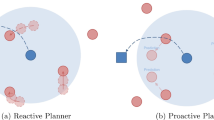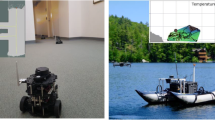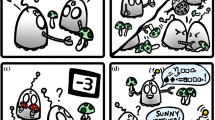Abstract
Path planning and collision avoidance are vital aspects of successful development and utilization of robots in complex and multi-agent environments. With the integration of robots into social settings, the significance of this issue becomes more apparent. This paper introduces a decentralized management approach based on deep reinforcement learning, where each agent learns independently based on its local observations. The proposed method employs a feature fusion technique which combines 1D, 2D, and 3D features. In order to streamline computation and optimize the training process, an established separation index method is utilized. This approach strategically selects a subset of the most informative features. The presented approach outperforms classical and learning-based methods in various environments with differing densities. Performance evaluation metrics include the interaction index, which indicates the percentage of collision-free scenarios, the reachability index, measuring the time for the slowest agent to reach its goal, the field of view index, demonstrating reduced computation time by narrowing the field of view without compromising interaction, and the scalability index, quantitatively measuring a system’s capability to efficiently handle increasing amounts of work or its ability to be enlarged to accommodate that growth. The performance of this method, compared to PRIMAL, ORCA, and ODRM* methods, has shown an increase of over 30% in situations where the environment is more complex and the number of agents is higher.









Similar content being viewed by others
Explore related subjects
Discover the latest articles, news and stories from top researchers in related subjects.References
Le-Anh T, De Koster MBM (2006) A review of design and control of automated guided vehicle systems. Eur J Oper Res 171(1):1–23
Alatise MB, Hancke GP (2020) A review on challenges of autonomous mobile robot and sensor fusion methods. IEEE Access 8:39830–39846
Mehdi F, Sefidgari BL, Barenji AV (2013) An adaptive neuro pid for controlling the altitude of quadcopter robot. In 2013 18th International Conference on Methods & Models in Automation & Robotics (MMAR), 662–665. IEEE
Raibert M, Blankespoor K, Nelson G, Playter R (2008) Bigdog, the rough-terrain quadruped robot. IFAC Proc Vol 41(2):10822–10825
Walker Thayne T, Sturtevant Nathan R (2019) Collision detection for agents in multi-agent pathfinding. arXiv e-prints, pages arXiv–1908,
Cheng PDC, Indri M, Possieri C, Sassano M, Sibona F (2023) Path planning in formation and collision avoidance for multi-agent systems. Nonlinear Anal Hybrid Syst 47:101293
Andreychuk A, Yakovlev K, Surynek P, Atzmon D, Stern R (2022) Multi-agent pathfinding with continuous time. Artif Intell 305:103662
Pianpak P, Son TC (2021) Dmapf: A decentralized and distributed solver for multi-agent path finding problem with obstacles. Electronic Proceedings in Theoretical Computer Science 345
Chehelgami S, Ashtari E, Basiri MA, Masouleh MT, Kalhor A (2023) Safe deep learning-based global path planning using a fast collision-free path generator. Robot Auton Syst 163:104384
Qiang W, Zhongli Z (2011) Reinforcement learning model, algorithms and its application. In 2011 International Conference on Mechatronic Science, Electric Engineering and Computer (MEC), 1143–1146. IEEE
Reijnen R, Zhang Y, Nuijten W, Senaras C, Goldak-Altgassen M (2020) Combining deep reinforcement learning with search heuristics for solving multi-agent path finding in segment-based layouts. In 2020 IEEE Symposium Series on Computational Intelligence (SSCI), 2647–2654. IEEE
Sartoretti G, Kerr J, Shi Y, Wagner G, Satish Kumar TK, Koenig S, Choset H (2019) Primal: Pathfinding via reinforcement and imitation multi-agent learning. IEEE Robot Autom Lett 4(3):2378–2385
Hussein A, Gaber MM, Elyan E, Jayne C (2017) Imitation learning: A survey of learning methods. ACM Computing Surveys (CSUR) 50(2):1–35
Chen H, Ji Y, Niu L (2020) Reinforcement learning path planning algorithm based on obstacle area expansion strategy. Intel Serv Robot 13(2):289–297
Lowe R, Wu YI, Tamar A, Harb J, Abbeel OAIP, Mordatch I (2017) Multi-agent actor-critic for mixed cooperative-competitive environments. Adv Neural Inf Process Syst 30:96
Chen YF, Liu M, Everett M, How JP (2017) Decentralized non-communicating multiagent collision avoidance with deep reinforcement learning. In 2017 IEEE international conference on robotics and automation (ICRA), 285–292. IEEE
Niu H, Ma C, Han P (2021) Directional optimal reciprocal collision avoidance. Robot Auton Syst 136:103705
Sharon G, Stern R, Felner A, Sturtevant NR (2015) Conflict-based search for optimal multi-agent pathfinding. Artif Intell 219:40–66
Felner A, Stern R, Shimony S, Boyarski E, Goldenberg M, Sharon G, Sturtevant N, Wagner G, Surynek P (2017) Search-based optimal solvers for the multi-agent pathfinding problem: Summary and challenges. In Proceedings of the International Symposium on Combinatorial Search 8:29–37
Long P, Fan T, Liao X, Liu W, Zhang H, Pan J (2018) Towards optimally decentralized multi-robot collision avoidance via deep reinforcement learning. In 2018 IEEE international conference on robotics and automation (ICRA), 6252–6259. IEEE
Hönig W, Kiesel S, Tinka A, Durham J, Ayanian N (2018) Conflict-based search with optimal task assignment. In Proceedings of the International Joint Conference on Autonomous Agents and Multiagent Systems
Chen C, Liu Y, Kreiss S, Alahi A (2019) Crowd-robot interaction: Crowd-aware robot navigation with attention-based deep reinforcement learning. In 2019 international conference on robotics and automation (ICRA), pages 6015–6022. IEEE
Li Q, Gama F, Ribeiro A, Prorok A (2020) Graph neural networks for decentralized multi-robot path planning. In 2020 IEEE/RSJ International Conference on Intelligent Robots and Systems (IROS), 11785–11792. IEEE
Ferner C, Wagner G, Choset H (2013) Odrm* optimal multirobot path planning in low dimensional search spaces. In 2013 IEEE International Conference on Robotics and Automation, 3854–3859. IEEE
Teixeira EÁ, Wesley B, Arjona RM (2022) Evaluation of 1d and 2d deep convolutional neural networks for driving event recognition. Sensors 22(11):4226
Li Q, Wang Q, Li X (2020) Mixed 2d/3d convolutional network for hyperspectral image super-resolution. Remote Sens 12(10):1660
Li J, Cui R, Li B, Li Y, Mei S, Du Q (2019) Dual 1d-2d spatial-spectral cnn for hyperspectral image super-resolution. In IGARSS 2019-2019 IEEE International Geoscience and Remote Sensing Symposium, 3113–3116. IEEE
Jafari R, Javidi MM, Rafsanjani MK (2019) Using deep reinforcement learning approach for solving the multiple sequence alignment problem. SN Appl Sci 1:1–12
Saffar M, Kalhor A (2023) Evaluation of dataflow through layers of convolutional neural networks in classification problems. Expert Syst Appl 224:119944
Haghpanah MA, Masouleh MT, Kalhor A (2023) Determining the trustworthiness of dnns in classification tasks using generalized feature-based confidence metric. Pattern Recogn 142:109683
Zhu H, Lee KA, Li H (2022) Discriminative speaker embedding with serialized multi-layer multi-head attention. Speech Commun 144:89–100
Zhong X, Li J, Koenig S, Ma H (2022) Optimal and bounded-suboptimal multi-goal task assignment and path finding. In 2022 International Conference on Robotics and Automation (ICRA), 10731–10737. IEEE
Qiu J, Chen C, Liu S, Zhang H-Y, Zeng B (2021) Slimconv: reducing channel redundancy in convolutional neural networks by features recombining. IEEE Trans Image Process 30:6434–6445
Author information
Authors and Affiliations
Corresponding author
Additional information
Publisher's Note
Springer Nature remains neutral with regard to jurisdictional claims in published maps and institutional affiliations.
Rights and permissions
Springer Nature or its licensor (e.g. a society or other partner) holds exclusive rights to this article under a publishing agreement with the author(s) or other rightsholder(s); author self-archiving of the accepted manuscript version of this article is solely governed by the terms of such publishing agreement and applicable law.
About this article
Cite this article
Parooei, M., Tale Masouleh, M. & Kalhor, A. MAP3F: a decentralized approach to multi-agent pathfinding and collision avoidance with scalable 1D, 2D, and 3D feature fusion. Intel Serv Robotics 17, 401–418 (2024). https://doi.org/10.1007/s11370-024-00537-2
Received:
Accepted:
Published:
Issue Date:
DOI: https://doi.org/10.1007/s11370-024-00537-2




